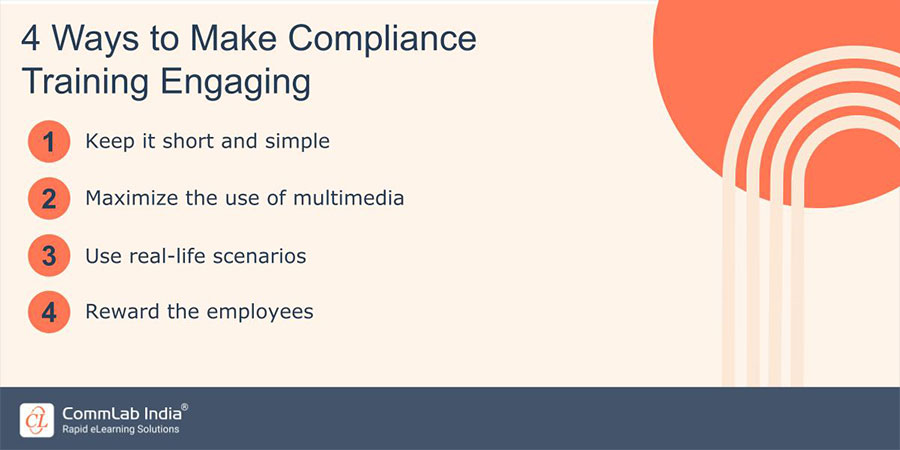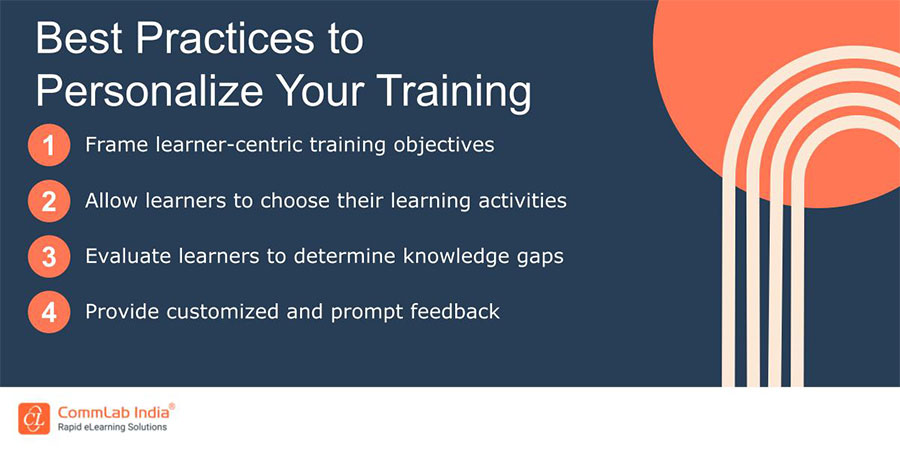How to Make Your Compliance Training Fun and Exciting

In the realm of corporate training, compliance sessions often carry a reputation for being dull and uninspiring. Employees may view them as a mandatory chore rather than an opportunity for personal and professional growth. However, the significance of compliance training cannot be overstated. To address this challenge, organizations are increasingly exploring ways to inject enthusiasm and engagement into their compliance programs. In this blog post, we will delve into the reasons why traditional compliance training falls short and explore strategies for making it a fun and exciting experience.
Are You Trying to Make Your Compliance Training Fun?
Here are a few ways you can do so -
- Incorporating gamification into compliance training
- Interactive learning approaches
- Technology and tools for engaging training
- Personalization and customization
- Recognition and rewards
- Feedback and continuous improvement
Understanding Compliance Training
Compliance training is a crucial component of organizational development, ensuring that employees adhere to industry regulations, company policies, and ethical standards. Typically, these programs cover topics such as data protection, workplace safety, diversity and inclusion, and more. However, the conventional methods of delivering compliance training often result in disengagement, low retention rates, and an overall negative impact on workplace culture.
Challenges with Traditional Compliance Training
Traditional compliance training faces several challenges, including employee disengagement, difficulty retaining information, resistance to mandatory training, and a potential negative influence on workplace culture. Employees may view compliance sessions as monotonous, leading to a lack of motivation to actively participate and retain the information presented.
→ Download eBook Now: Online Learning Services
Why Fun and Exciting Compliance Training Matters
Making compliance training fun and exciting is not just about entertainment; it's about creating an environment where learning is enjoyable and memorable. Engaged employees are more likely to retain information, apply it in their roles, and contribute positively to the organization's overall culture. By transforming compliance training into an enjoyable experience, organizations can foster a sense of motivation and commitment to ongoing compliance adherence.

How to Make Your Compliance Training Fun and Exciting
1. Incorporating Gamification into Compliance Training
Gamification has proven to be a game-changer in the realm of compliance training. By infusing elements of competition, achievement, and rewards into the learning process, organizations can significantly enhance engagement. Scenario-based simulations provide employees with practical challenges, allowing them to apply their knowledge in a risk-free environment. Quizzes with immediate feedback not only reinforce learning but also make the training experience more interactive.
Leaderboards create a friendly sense of competition, motivating employees to excel and be recognized for their compliance knowledge and skills. The key is to strike a balance between the competitive aspect and the training goals, ensuring that the gamified elements enhance learning rather than overshadowing it. Check out this small video to understand more about gamification.
2. Interactive Learning Approaches
Ditching the traditional lecture-style training, organizations are embracing interactive learning approaches to make compliance training more engaging. Role-playing scenarios allow employees to step into different roles and navigate real-world situations, promoting a deeper understanding of compliance principles. Simulation exercises provide a hands-on experience, enabling participants to make decisions and witness the consequences in a controlled environment. Group activities and discussions foster collaboration and the exchange of diverse perspectives, creating a dynamic learning atmosphere. Real-life case studies bring relevancy to the training, illustrating how compliance principles are applied in actual workplace scenarios.
3. Technology and Tools for Engaging Training
The integration of advanced technology has opened up new possibilities for creating engaging compliance training programs. eLearning platforms offer interactive modules, quizzes, and multimedia content that cater to various learning styles. Virtual reality (VR) and augmented reality (AR) simulations immerse employees in realistic scenarios, enhancing both understanding and retention. Interactive multimedia content, such as videos and animations, breaks the monotony of text-heavy materials and captures the attention of visual learners. Mobile apps provide flexibility, allowing employees to access training materials at their convenience, and promoting continuous learning beyond the traditional office setting.
4. Personalization and Customization
Recognizing that each employee has unique learning needs and responsibilities, personalization and customization play a pivotal role in enhancing the effectiveness of compliance training. Tailoring training content to specific roles within the organization ensures relevance and applicability. Allowing employees to set their learning pace and providing options for personalized learning paths accommodating different learning preferences. By acknowledging the diversity of the workforce and catering to individual needs, organizations can create a more inclusive and effective compliance training experience.

5. Recognition and Rewards
Acknowledging and celebrating compliance achievements is a powerful motivator for employees. Implementing a rewards system, such as badges, certificates, or even small incentives, adds an element of recognition to the learning process. Recognizing compliance champions within the organization not only boosts morale but also sets a positive example for others. Regularly highlighting the accomplishments of individuals or teams creates a culture where compliance is not just a requirement but a source of pride. This positive reinforcement fosters a sense of accomplishment, making employees more likely to actively engage in future compliance training initiatives.
6. Feedback and Continuous Improvement
Feedback is a crucial component of any successful training program. Actively seeking input from employees allows organizations to understand what works well and where improvements can be made. Analyzing feedback enables the refinement of training materials, delivery methods, and overall program effectiveness. Regular surveys, focus groups, or one-on-one discussions can provide valuable insights into the participant experience. A commitment to continuous improvement demonstrates an organization's responsiveness to the needs of its workforce, ensuring that compliance training remains relevant, engaging, and aligned with evolving industry standards and regulations.
Wrapping Up!
In conclusion, transforming compliance training into a fun and exciting experience is not only achievable but imperative for organizational success. Embracing these strategies mentioned above will not only enhance compliance adherence but also contribute to a culture of continuous learning and improvement within the workplace. Check out this comprehensive eBook and explore more about online learning and elevate your corporate training experience.



![Tips to Maximize Engagement in E-learning [Infographic]](https://blog.commlabindia.com/hubfs/Imported_Blog_Media/engaging-online-compliance-courses-infographic-1.png)
![3 Ways that MOODLE LMS Helps Impart Effective Product Sales Training [Infographic]](https://blog.commlabindia.com/hubfs/Imported_Blog_Media/sales-training-via-micro-learning.png)
